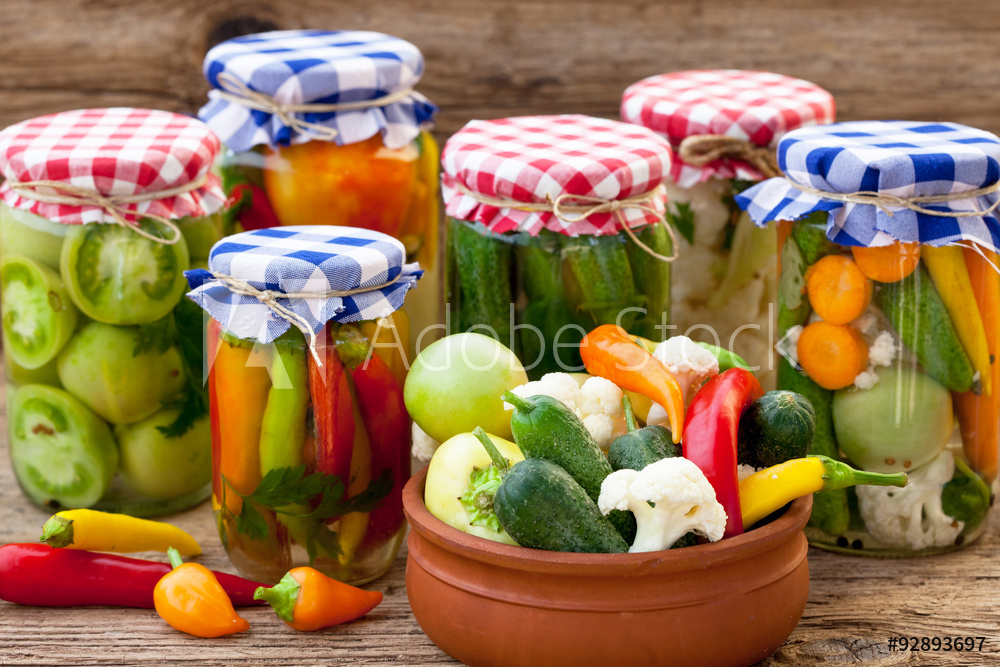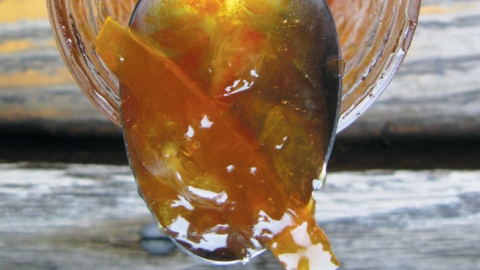Six Methods of Preserving Food: Go beyond water-bath canning
There are six different food preservation techniques, all simple, all safe.
Basically, in home preservation we either a) kill all spoilers, or b) retard the growth of spoilers: You can’t get sick from a spoiler that is inert.
• WATER-BATH CANNING
This is a way of processing high-acid foods like fruits and pickled vegetables for long-term storage. Because spoilers, including Clostridium botulinum, the bacteria that causes botulism, cannot develop in a high-acid environment, foods that have a pH value of 4.6 or less are safe to water-bath can. High-acid food is packed into clean or sterile glass jars with metal bands and new lids, and the jars are boiled in water for a prescribed amount of time. Successful water-bath canning is composed of two simple stages: killing elements that cause spoilage of foods (enzymes, mold, yeasts and bacteria), and establishing a sealed container where new elements cannot be introduced. These conditions, combined with the high acidity of the food within the jar, ensure that harmful microorganisms do not develop and the food is safe to store on the shelf. This process is ideal for fruits.
• PRESSURE CANNING
You must own a pressure canner to process foods this way, where foods are processed in glass jars under pressurized heat for a prescribed amount of time. Steam builds up in the airtight cavity of the pressure canner, accomplishing the same thing as a water-bath canner, but at much higher temperatures. This technique kills all spoilers. Period. Pressure canning is used when processing low-acid foods (pH 4.6 and higher), like vegetables without added acid, meat and fish.
• FREEZING
This is the process by which food is solidified by bringing it to temperatures between 0°F and 32°F, which in turn slows the metabolism of foods and the spoilers that may live on them. Spoilers are not destroyed, but they don’t bloom, either. With proper defrosting and prompt cooking and/or heating, spoilers on foods that have been frozen will never amount to anything. This process is effective for a large variety of foods.
• PICKLING
Pickling is the process of preserving foods in a high-acid solution, usually vinegar. Spoilers cannot grow in a high-acid environment. This state of high acidity is achieved two ways: by means of salt, and by vinegar (though when you pickle with vinegar you usually add salt as well). The pickled foods are then preserved for shelf life by water-bath canning. This process is good for low-acid (pH 4.6 and up) vegetables.
• SALT CURING (preserving foods in salt) AND SMOKING (preserving foods with a combination of salt curing and heat from the smoke)
Curing is the art of permeating food with salt via a dry cure (combining the food with dry salt) or a brine (soaking the food in salt and water combined). Salt urges water from cells, which dehydrates the flesh, and as spoilers need moisture to grow, saltcured foods provide an inhospitable environment for microbes. Likewise, salt enters and dehydrates the microbes themselves, causing havoc with a spoiler’s ability to survive. Cured foods must be refrigerated. Smoking (inundating a food with hot or cold smoke) is often performed in conjunction with curing. Smoking adds flavor, kills microorganisms through heat and extends the life of the product. It is an excellent process for proteins.
• PRESERVING IN OIL
In this process, foods are covered in an impenetrable layer of oil and refrigerated. Foods that are pre-cooked—which kills many spoilers—before being covered in oil and refrigerated last longer than raw foods that have been covered in oil and refrigerated. As air cannot penetrate olive oil, it acts as a seal between the foodstuff and the environment, putting off the growth of spoilers longer than simple refrigeration. The bacterium that causes botulism prefers an anaerobic environment, but can’t bloom into toxin under refrigeration. The downside of preserving in oil is the food becomes saturated with oil, and so is useful only in recipes to which you would have added oil anyway.





